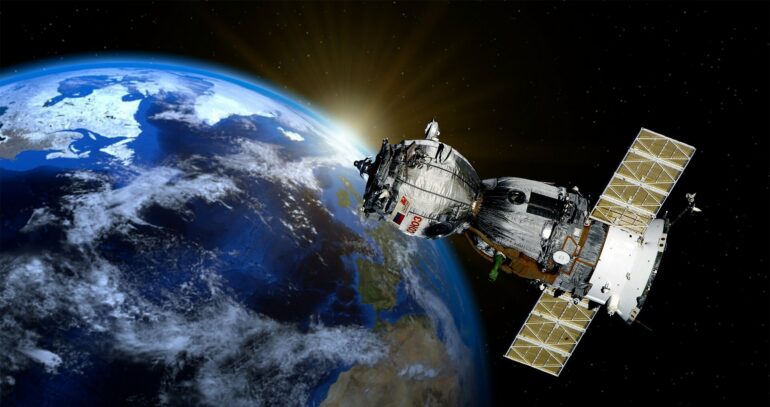In an experimental study published in PNAS Nexus, researchers explore the visible impact flash that is created by high-velocity impacts.
Impacts by debris and meteoroids pose a significant threat to satellites, space probes, and hypersonic craft. Such high-velocity impacts create a brief, intense burst of light, known as an impact flash, which contains information about both the target and the impactor.
Gary Simpson, K.T. Ramesh, and colleagues explored the impact flash by shooting stainless steel spheres into an aluminum alloy plate, at a speed of three kilometers per second—about 6,700 miles per hour, or more than nine times the speed of sound.
The resulting impact flashes were photographed using ultra-high-speed cameras and high-speed spectroscopy, which measures the color and brightness of the light. Immediately after impact, a luminous disk is seen expanding around the impacting sphere. Only a few millionths of a second later, the disk takes on an almost floral shape, as fragments ejected from the impact crater form an ejecta cone, with petal-like projections at the outer edge.
The authors conclude that these impact flashes are created by the fragmentation of an ultra-fast jet of material ejected from the colliding bodies. Minuscule condensed fragments from the jet interact with the atmosphere to create an extremely bright radiating cloud of vapor, which expands at a speed of over 10 kilometers per second (over 22,000 miles per hour). The material making up the target and the size of the jetted particles can be inferred from the flash, according to the authors.
More information:
Gary Simpson et al, First contact: Fine structure of the impact flash and ejecta during hypervelocity impact, PNAS Nexus (2023). DOI: 10.1093/pnasnexus/pgad214
Citation:
Decoding the impact flash created by high-velocity impacts (2023, July 13)



